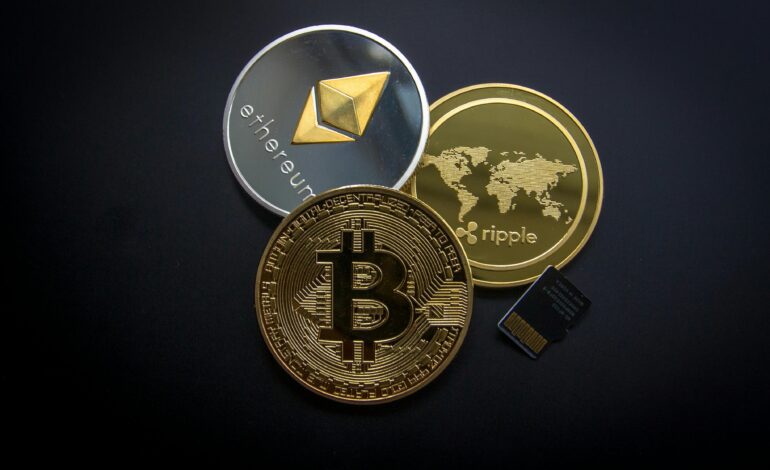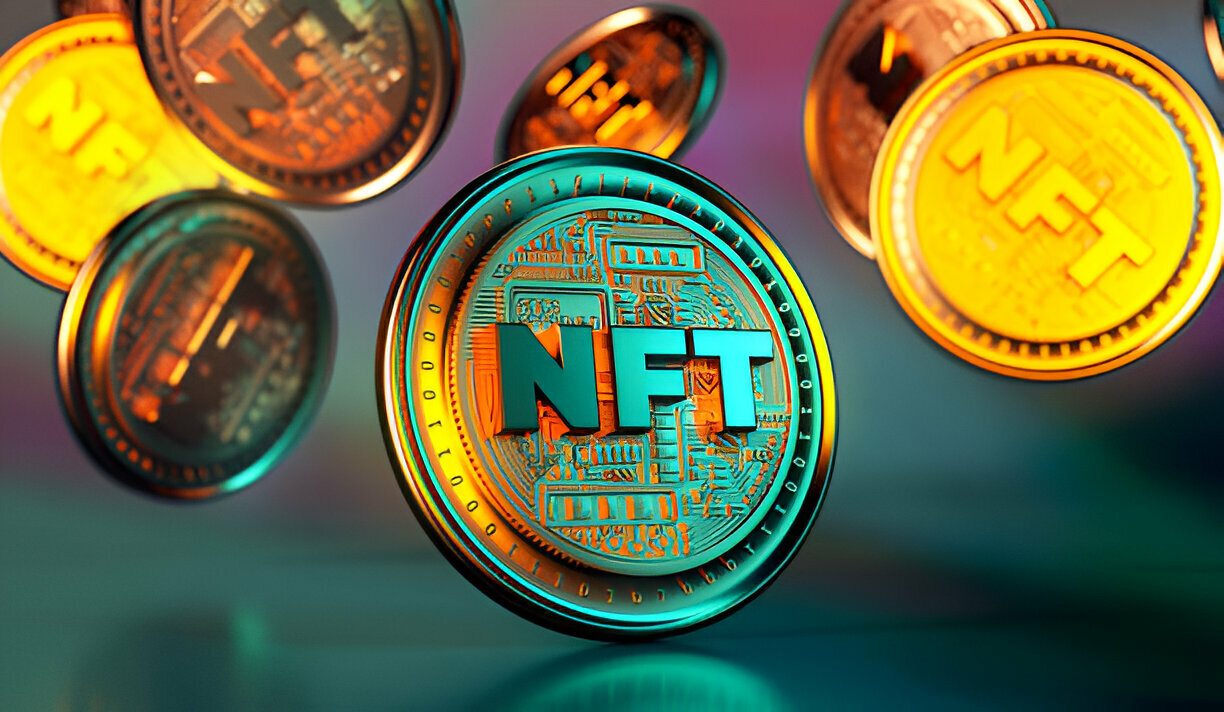Cryptocurrency Exchanges: Types and Best Practices

Cryptocurrency exchanges serve as the cornerstone of the digital asset ecosystem, facilitating the buying, selling, and trading of various cryptocurrencies. As the adoption of cryptocurrencies continues to grow, the role of exchanges in the financial world becomes increasingly vital. In this comprehensive guide, we will explore cryptocurrency exchanges, the different types available, and best practices for using them safely and effectively.
Understanding Cryptocurrency Exchanges
A cryptocurrency exchange is an online platform that enables users to trade one digital currency for another or for fiat currency (such as USD, EUR, or JPY). These platforms play a pivotal role in the cryptocurrency market, providing liquidity, price discovery, and accessibility to participants worldwide.
Cryptocurrency exchanges offer a range of services, including:
Trading: Users can buy, sell, or trade cryptocurrencies, often through order types like market orders, limit orders, and stop-loss orders.
Market Data: Exchanges provide real-time market data, including price charts, trading volumes, order book depth, and historical data, to help traders make informed decisions.
Wallets: Many exchanges offer integrated wallets for storing and managing cryptocurrencies, making it convenient for users.
Fiat Onramps/Offramps: Some exchanges allow users to deposit or withdraw fiat currency, enabling seamless transactions between the digital and traditional financial worlds.
Leverage and Margin Trading: Some exchanges offer leverage or margin trading, allowing traders to borrow funds to amplify their positions. While this can lead to increased profits, it also carries higher risk.
Staking and Yield Farming: Certain exchanges support staking and yield farming, allowing users to earn passive income by holding or providing liquidity to specific cryptocurrencies.
Types of Cryptocurrency Exchanges
Cryptocurrency exchanges can be categorized into several types, each with its unique characteristics, features, and target audiences. Let’s explore the primary types of cryptocurrency exchanges:
Centralized Exchanges (CEXs): Centralized exchanges are the most common type, offering a platform for users to trade cryptocurrencies. They are managed by a central entity, which controls the order book, matches trades, and facilitates transactions. Well-known centralized exchanges include Binance, Coinbase, Kraken, and Bitstamp.
Decentralized Exchanges (DEXs): Decentralized exchanges operate without a central authority or intermediary. They enable peer-to-peer trading directly between users, relying on blockchain technology to facilitate transactions. DEXs provide enhanced privacy and security and are accessible to users worldwide. Examples include Uniswap, SushiSwap, and PancakeSwap.
Hybrid Exchanges: Hybrid exchanges combine elements of both centralized and decentralized models. They provide the benefits of centralized exchanges, such as speed and liquidity, while also incorporating decentralized features, such as self-custody of funds. Hybrid exchanges aim to strike a balance between security and user experience.
Derivatives Exchanges: Derivatives exchanges specialize in trading cryptocurrency derivatives, including futures contracts, options, and perpetual swaps. These exchanges enable traders to speculate on the price movements of cryptocurrencies without owning the underlying assets. Examples include BitMEX, Bybit, and FTX.
Peer-to-Peer (P2P) Exchanges: P2P exchanges connect buyers and sellers directly, facilitating the exchange of cryptocurrencies. Users can post trade offers, negotiate terms, and complete transactions without the need for an intermediary. P2P platforms often provide escrow services to enhance security. Notable P2P exchanges include LocalBitcoins and Paxful.
Instant Exchanges: Instant exchanges offer a simplified trading experience, allowing users to quickly swap one cryptocurrency for another without creating an account. They are designed for convenience and speed, but may not offer the same features as traditional exchanges. Examples include Changelly and ShapeShift.
Token Swaps: Token swap platforms focus on swapping tokens issued on different blockchain networks. Users can exchange tokens without the need for an intermediary, often utilizing decentralized technology.
Brokerage Services: Cryptocurrency brokerage services act as intermediaries between buyers and sellers. They offer a user-friendly interface, helping newcomers to the crypto space buy digital assets with ease. Coinbase is a prime example of a cryptocurrency brokerage service.
Best Practices for Using Cryptocurrency Exchanges
While cryptocurrency exchanges provide valuable services, users must exercise caution and adhere to best practices to ensure a secure and seamless experience. Here are some key guidelines for using cryptocurrency exchanges effectively:
Research the Exchange: Before using any exchange, conduct thorough research to understand its reputation, security features, fees, and supported cryptocurrencies. Reviews and user feedback can be valuable sources of information.
Secure Your Account: Utilize strong, unique passwords for your exchange accounts and enable two-factor authentication (2FA) to add an extra layer of security. Avoid using easily guessable passwords and consider using a password manager.
Verify the Exchange’s Regulatory Compliance: Ensure the exchange complies with relevant regulations in your jurisdiction. Compliance can provide additional protections for users and their funds.
Use Cold Storage: If you plan to hold significant amounts of cryptocurrency, consider using hardware wallets or other cold storage solutions to protect your assets from online threats.
Start Small: When starting to trade or invest in cryptocurrencies, begin with a small amount of capital to gain experience and minimize risk.
Understand Fees: Familiarize yourself with the exchange’s fee structure, including trading fees, withdrawal fees, and funding costs. Be aware of any hidden fees that may apply.
Stay Informed: Keep up with the latest news and developments in the cryptocurrency space. Market sentiment and news can influence cryptocurrency prices and trading opportunities.
Avoid Phishing: Be cautious of phishing attempts, including fake exchange websites, emails, or messages that seek to steal your login credentials or private keys. Always double-check URLs and sources.
Diversify Your Holdings: Spreading your holdings across multiple exchanges can reduce risk in case one exchange experiences downtime, a security breach, or other issues.
Withdraw to a Secure Wallet: If you’re not actively trading, consider withdrawing your funds to a secure, offline wallet for added security.
Beware of Pump-and-Dump Schemes: Avoid falling for schemes that promise quick and guaranteed profits. Be cautious of assets with rapidly rising prices and conduct due diligence before investing.
Tax Considerations: Keep track of your cryptocurrency transactions and understand the tax implications in your jurisdiction. Some countries require users to report their crypto holdings and gains.
Seek Professional Advice: If you are uncertain about tax, legal, or investment matters related to cryptocurrencies, consider seeking advice from a qualified professional.
Social Engineering Awareness: Be cautious of unsolicited communications requesting your sensitive information. Verify the identity of anyone requesting your data.
Recovery Procedures: Familiarize yourself with the exchange’s account recovery procedures in case you lose access to your account.
Security Practices for Cryptocurrency Exchanges
Cryptocurrency exchanges invest heavily in security measures to protect user funds and data. However, users also play a crucial role in safeguarding their assets. Here are some additional security practices for cryptocurrency exchanges:
Custody of Funds: Research the exchange’s approach to custody. Consider using exchanges that employ advanced security measures such as cold storage, multi-signature wallets, and insurance for user funds.
Security Audits: Choose exchanges that undergo regular security audits by third-party firms to identify vulnerabilities and address potential threats.
Email Verification: Be cautious when clicking on links or downloading attachments in emails related to your exchange account. Always verify the source and legitimacy of emails.
Whitelist Addresses: Some exchanges offer the option to whitelist withdrawal addresses. This extra layer of security ensures that funds can only be withdrawn to pre-approved addresses.
Withdrawal Confirmation: Enable withdrawal confirmation emails or two-factor authentication for withdrawals. This helps prevent unauthorized access to your funds.
Device Security: Secure the devices you use for accessing your exchange accounts. Ensure they are free from malware, viruses, and keyloggers.
Geographic Restrictions: Some exchanges offer geographic restrictions to limit access to your account from specific regions. Enabling this feature can add an extra layer of security.
Password Managers: Use a reputable password manager to generate, store, and autofill your strong and unique passwords for exchange accounts.
Token Authentication: Utilize hardware tokens or mobile authenticator apps for two-factor authentication. This provides an additional layer of security compared to SMS-based authentication.
Beware of Social Engineering: Be cautious of social engineering attempts in which malicious actors impersonate exchange support staff. Verify the identity of anyone claiming to represent the exchange.
VPN Usage: Consider using a virtual private network (VPN) when accessing your exchange account, especially when using public Wi-Fi networks.
Regular Check-Ins: Periodically check your exchange account for unauthorized activity, unfamiliar IP addresses, or unrecognized devices.
Financial Privacy: Be mindful of the financial information you share on the exchange. Avoid disclosing more information than necessary for your transactions.
Community Feedback: Join cryptocurrency forums or communities to share information and gather feedback from other users about their experiences with specific exchanges.
Recovering from Exchange Incidents
In the event of an incident, such as a security breach or unauthorized access to your exchange account, there are steps you can take to mitigate potential losses and recover your assets:
Contact Support: If you notice unauthorized activity or suspect a security breach, contact the exchange’s customer support immediately to report the incident.
Change Passwords: Change the passwords for your exchange account, email account, and any other related accounts.
Enable 2FA: If not already enabled, enable two-factor authentication on your exchange account to enhance security.
Review Account Activity: Review your account activity and transaction history to identify any unauthorized actions. Document the incident for future reference.
Secure Your Email: If the incident involved unauthorized access to your email account, change the email password and enable additional security measures.
Revoke API Access: If you use API keys for trading bots or applications, revoke and reconfigure them to ensure the security of your account.
Withdraw Funds: If possible, withdraw your funds to a secure, offline wallet or another trusted exchange.
Monitor Accounts: Continuously monitor your other financial and online accounts for unusual activity, as unauthorized access may extend beyond the exchange.
Report to Authorities: If you experience a significant financial loss or believe the incident may involve criminal activity, report it to your local authorities.
The Importance of Due Diligence
Before choosing a cryptocurrency exchange, conduct due diligence to assess its trustworthiness and reliability. While the cryptocurrency market offers numerous opportunities, it also presents risks, making it essential to choose exchanges carefully.
Consider the following factors during your due diligence process:
Reputation: Investigate the exchange’s reputation, including its history, past incidents, and user feedback.
Security Measures: Assess the exchange’s security measures, including custody of funds, cybersecurity practices, and compliance with industry standards.
Regulatory Compliance: Verify the exchange’s compliance with local regulations and know-your-customer (KYC) and anti-money laundering (AML) requirements.
Fees: Understand the exchange’s fee structure, including trading fees, withdrawal fees, deposit costs, and other expenses.
Supported Cryptocurrencies: Ensure the exchange supports the cryptocurrencies you plan to trade or invest in.
Liquidity: Evaluate the exchange’s liquidity to ensure you can easily execute trades at your desired price.
Customer Support: Test the exchange’s customer support responsiveness and availability.
User Experience: Consider the platform’s user interface and overall experience to ensure it meets your needs.
Location Restrictions: Be aware of any geographic restrictions imposed by the exchange and ensure they align with your location.
Conclusion
Cryptocurrency exchanges are the lifeblood of the digital asset ecosystem, providing users with access to a wide range of cryptocurrencies and trading opportunities. As the cryptocurrency market evolves, it becomes increasingly crucial for participants to use exchanges safely and effectively.
By following best practices, securing your account, staying informed about the latest developments, and conducting due diligence, you can navigate the world of cryptocurrency exchanges with confidence. Whether you are a seasoned trader or new to the crypto space, protecting your assets and making informed decisions is paramount for a successful and secure experience in the world of digital assets.

 Bitcoin
Bitcoin  Ethereum
Ethereum  Tether
Tether  XRP
XRP  Solana
Solana  USDC
USDC  TRON
TRON  Dogecoin
Dogecoin  Lido Staked Ether
Lido Staked Ether  Cardano
Cardano  Wrapped Bitcoin
Wrapped Bitcoin  Hyperliquid
Hyperliquid  Wrapped stETH
Wrapped stETH  Sui
Sui  Bitcoin Cash
Bitcoin Cash  Chainlink
Chainlink  LEO Token
LEO Token  Stellar
Stellar  Avalanche
Avalanche  USDS
USDS  Toncoin
Toncoin  Shiba Inu
Shiba Inu  Wrapped eETH
Wrapped eETH  Hedera
Hedera  WETH
WETH  Litecoin
Litecoin  WhiteBIT Coin
WhiteBIT Coin  Binance Bridged USDT (BNB Smart Chain)
Binance Bridged USDT (BNB Smart Chain)  Monero
Monero  Coinbase Wrapped BTC
Coinbase Wrapped BTC  Ethena USDe
Ethena USDe  Polkadot
Polkadot  Bitget Token
Bitget Token  Uniswap
Uniswap  Aave
Aave  Pepe
Pepe  Dai
Dai  Pi Network
Pi Network  Ethena Staked USDe
Ethena Staked USDe  Bittensor
Bittensor  OKB
OKB  Aptos
Aptos  BlackRock USD Institutional Digital Liquidity Fund
BlackRock USD Institutional Digital Liquidity Fund  Jito Staked SOL
Jito Staked SOL  NEAR Protocol
NEAR Protocol  Internet Computer
Internet Computer  Ethereum Classic
Ethereum Classic  Cronos
Cronos  Ondo
Ondo  sUSDS
sUSDS  USD1
USD1  Mantle
Mantle  Cosmos Hub
Cosmos Hub  Gate
Gate  VeChain
VeChain  Artificial Superintelligence Alliance
Artificial Superintelligence Alliance  Official Trump
Official Trump  Bonk
Bonk  Ethena
Ethena  Sky
Sky  Render
Render  Lombard Staked BTC
Lombard Staked BTC  POL (ex-MATIC)
POL (ex-MATIC)  Arbitrum
Arbitrum  Quant
Quant  Filecoin
Filecoin  Binance-Peg WETH
Binance-Peg WETH  Jupiter Perpetuals Liquidity Provider Token
Jupiter Perpetuals Liquidity Provider Token  Algorand
Algorand  Worldcoin
Worldcoin  Sei
Sei  USDtb
USDtb  Binance Staked SOL
Binance Staked SOL  KuCoin
KuCoin  Tokenize Xchange
Tokenize Xchange  USDT0
USDT0  Jupiter
Jupiter  SPX6900
SPX6900  NEXO
NEXO  Rocket Pool ETH
Rocket Pool ETH  Fartcoin
Fartcoin  Celestia
Celestia  Polygon Bridged USDT (Polygon)
Polygon Bridged USDT (Polygon)  Injective
Injective  Virtuals Protocol
Virtuals Protocol  Stacks
Stacks  Sonic
Sonic  Binance Bridged USDC (BNB Smart Chain)
Binance Bridged USDC (BNB Smart Chain)  Mantle Staked Ether
Mantle Staked Ether  StakeWise Staked ETH
StakeWise Staked ETH  Optimism
Optimism  SyrupUSDC
SyrupUSDC  Pudgy Penguins
Pudgy Penguins  PAX Gold
PAX Gold  Solv Protocol BTC
Solv Protocol BTC  Story
Story  Arbitrum Bridged WBTC (Arbitrum One)
Arbitrum Bridged WBTC (Arbitrum One)  Kaia
Kaia  Wrapped BNB
Wrapped BNB  dogwifhat
dogwifhat  Renzo Restaked ETH
Renzo Restaked ETH  PayPal USD
PayPal USD  clBTC
clBTC  The Graph
The Graph  FLOKI
FLOKI  Tether Gold
Tether Gold  Immutable
Immutable  Jupiter Staked SOL
Jupiter Staked SOL  PancakeSwap
PancakeSwap  Marinade Staked SOL
Marinade Staked SOL  Liquid Staked ETH
Liquid Staked ETH  OUSG
OUSG  Theta Network
Theta Network  Curve DAO
Curve DAO  Superstate Short Duration U.S. Government Securities Fund (USTB)
Superstate Short Duration U.S. Government Securities Fund (USTB)  Stables Labs USDX
Stables Labs USDX  Lido DAO
Lido DAO  Jito
Jito  GALA
GALA  Ondo US Dollar Yield
Ondo US Dollar Yield  Zcash
Zcash  Ethereum Name Service
Ethereum Name Service  IOTA
IOTA  Wrapped HYPE
Wrapped HYPE  Aerodrome Finance
Aerodrome Finance  The Sandbox
The Sandbox  BitTorrent
BitTorrent  Solv Protocol Staked BTC
Solv Protocol Staked BTC  Maple Finance
Maple Finance  Raydium
Raydium  JasmyCoin
JasmyCoin  Saros
Saros  Usual USD
Usual USD  Super OETH
Super OETH  tBTC
tBTC  Pyth Network
Pyth Network  Pendle
Pendle  Walrus
Walrus  Tezos
Tezos  Mantle Restaked ETH
Mantle Restaked ETH  L2 Standard Bridged WETH (Base)
L2 Standard Bridged WETH (Base)  AB
AB  cgETH Hashkey Cloud
cgETH Hashkey Cloud  Falcon USD
Falcon USD  Flow
Flow  Avalanche Bridged BTC (Avalanche)
Avalanche Bridged BTC (Avalanche)  Decentraland
Decentraland  Arbitrum Bridged WETH (Arbitrum One)
Arbitrum Bridged WETH (Arbitrum One)  Core
Core  Staked HYPE
Staked HYPE  TrueUSD
TrueUSD  ApeCoin
ApeCoin  Onyxcoin
Onyxcoin  Bitcoin SV
Bitcoin SV  Ripple USD
Ripple USD  Bridged USDC (Polygon PoS Bridge)
Bridged USDC (Polygon PoS Bridge)  THORChain
THORChain  Dog (Bitcoin)
Dog (Bitcoin)  Binance-Peg Dogecoin
Binance-Peg Dogecoin  Brett
Brett  APENFT
APENFT  DeXe
DeXe  Beldex
Beldex  Kava
Kava  Helium
Helium  Reserve Rights
Reserve Rights  USDD
USDD  Circle USYC
Circle USYC  Starknet
Starknet  BUILDon
BUILDon  Movement
Movement  Stader ETHx
Stader ETHx  dYdX
dYdX  Mog Coin
Mog Coin  Compound
Compound  NEO
NEO  Conflux
Conflux  MultiversX
MultiversX  Mantle Bridged USDT (Mantle)
Mantle Bridged USDT (Mantle)  AIOZ Network
AIOZ Network  eCash
eCash  KAITO
KAITO  Ether.fi Staked BTC
Ether.fi Staked BTC  DeepBook
DeepBook  Ether.fi
Ether.fi  Axie Infinity
Axie Infinity  EigenCloud (prev. EigenLayer)
EigenCloud (prev. EigenLayer)  Polygon PoS Bridged DAI (Polygon POS)
Polygon PoS Bridged DAI (Polygon POS)  Telcoin
Telcoin  Coinbase Wrapped Staked ETH
Coinbase Wrapped Staked ETH  ether.fi Staked ETH
ether.fi Staked ETH  Chiliz
Chiliz  JUST
JUST  Swell Ethereum
Swell Ethereum  Olympus
Olympus  Arweave
Arweave  ZKsync
ZKsync  Global Dollar
Global Dollar  Sun Token
Sun Token  Polygon Bridged WBTC (Polygon POS)
Polygon Bridged WBTC (Polygon POS)  Polygon PoS Bridged WETH (Polygon POS)
Polygon PoS Bridged WETH (Polygon POS)  Ket
Ket  Grass
Grass  Axelar
Axelar  Ronin
Ronin  Legacy Frax Dollar
Legacy Frax Dollar  Binance-Peg BUSD
Binance-Peg BUSD  Terra Luna Classic
Terra Luna Classic  Wormhole
Wormhole  Trip
Trip  Bybit Staked SOL
Bybit Staked SOL  GHO
GHO  SuperVerse
SuperVerse  Popcat
Popcat  Trust Wallet
Trust Wallet  Gnosis
Gnosis  OpenEden OpenDollar
OpenEden OpenDollar  Plume
Plume  aBTC
aBTC  Akash Network
Akash Network  Treehouse ETH
Treehouse ETH  Amp
Amp  Wrapped AVAX
Wrapped AVAX  Compounding OpenDollar
Compounding OpenDollar  Keeta
Keeta  Cheems Token
Cheems Token  Useless Coin
Useless Coin  Spiko EU T-Bills Money Market Fund
Spiko EU T-Bills Money Market Fund  cWBTC
cWBTC  Turbo
Turbo  Creditcoin
Creditcoin  Polygon
Polygon  1inch
1inch  Decred
Decred  Aethir
Aethir  pumpBTC
pumpBTC  BTSE Token
BTSE Token  Safe
Safe  Livepeer
Livepeer  cat in a dogs world
cat in a dogs world  Universal BTC
Universal BTC  ETHPlus
ETHPlus  Dash
Dash  BENQI Liquid Staked AVAX
BENQI Liquid Staked AVAX  Drift Staked SOL
Drift Staked SOL  Moca Network
Moca Network  MX
MX  Theta Fuel
Theta Fuel  Golem
Golem  SafePal
SafePal  Peanut the Squirrel
Peanut the Squirrel  Zebec Network
Zebec Network  Euler
Euler  Toshi
Toshi  Kusama
Kusama  Resolv USR
Resolv USR  Qtum
Qtum  Mina Protocol
Mina Protocol  Blockchain Capital
Blockchain Capital  MANTRA
MANTRA  Zilliqa
Zilliqa  EURC
EURC  Berachain
Berachain  IoTeX
IoTeX  Arkham
Arkham  LayerZero
LayerZero  Ravencoin
Ravencoin  Baby Doge Coin
Baby Doge Coin  Wrapped Ether (Mantle Bridge)
Wrapped Ether (Mantle Bridge)  Synthetix Network
Synthetix Network  Legacy Token
Legacy Token  Convex Finance
Convex Finance  SwissBorg
SwissBorg  Basic Attention
Basic Attention  WEMIX
WEMIX  SKOR AI
SKOR AI  Tradable NA Rent Financing Platform SSTN
Tradable NA Rent Financing Platform SSTN  USDa
USDa  Notcoin
Notcoin  0x Protocol
0x Protocol  Gas
Gas  Moo Deng
Moo Deng  Neiro
Neiro  Astar
Astar  Frax (prev. FXS)
Frax (prev. FXS)  Oasis
Oasis  Verus
Verus  yearn.finance
yearn.finance  ai16z
ai16z  VeThor
VeThor  GoMining Token
GoMining Token  MORI COIN
MORI COIN  Blur
Blur  Aster Staked BNB
Aster Staked BNB  Tribe
Tribe  OriginTrail
OriginTrail  Binance-Peg SOL
Binance-Peg SOL  Siacoin
Siacoin  Elixir deUSD
Elixir deUSD  Nervos Network
Nervos Network  MimboGameGroup
MimboGameGroup  Wrapped fragSOL
Wrapped fragSOL  KOGE
KOGE  Qubic
Qubic  ORDI
ORDI  Aave USDC (Sonic)
Aave USDC (Sonic)  Sahara AI
Sahara AI  Threshold Network
Threshold Network  Celo
Celo  Steakhouse USDC Morpho Vault
Steakhouse USDC Morpho Vault  Fluid
Fluid  Banana For Scale
Banana For Scale  Gigachad
Gigachad  Kinesis Gold
Kinesis Gold  UXLINK
UXLINK  AgentFun.AI
AgentFun.AI  Polymesh
Polymesh  aelf
aelf  Holo
Holo  Stargate Finance
Stargate Finance  Nexus Mutual
Nexus Mutual  STASIS EURO
STASIS EURO  Cronos Bridged USDC (Cronos)
Cronos Bridged USDC (Cronos)  Rekt
Rekt  CoW Protocol
CoW Protocol  Prom
Prom  Ankr Network
Ankr Network  GMX
GMX  Kinesis Silver
Kinesis Silver  EthereumPoW
EthereumPoW  Infrared Bera
Infrared Bera  Origin Ether
Origin Ether  aura
aura  Chia
Chia  Harmony
Harmony  MAG7.ssi
MAG7.ssi  Zano
Zano  Humanity
Humanity  Freysa AI
Freysa AI  Drift Protocol
Drift Protocol  FUNToken
FUNToken  CoinEx
CoinEx  Vana
Vana  TDCCP
TDCCP  Resolv RLP
Resolv RLP  DigiByte
DigiByte  KUB Coin
KUB Coin  Function ƒBTC
Function ƒBTC  AI Companions
AI Companions  Solayer
Solayer  cETH
cETH  WOO
WOO  AUSD
AUSD  Kamino
Kamino  Conscious Token
Conscious Token  GOHOME
GOHOME  aixbt by Virtuals
aixbt by Virtuals  GMT
GMT  Noble Dollar (USDN)
Noble Dollar (USDN)  Melania Meme
Melania Meme  Echelon Prime
Echelon Prime  Coinshift USDL Morpho Vault
Coinshift USDL Morpho Vault  XYO Network
XYO Network  Kadena
Kadena  Non-Playable Coin
Non-Playable Coin  Chintai
Chintai  Mask Network
Mask Network  ZIGChain
ZIGChain  Enjin Coin
Enjin Coin  Anzen USDz
Anzen USDz  Liquity
Liquity  Launch Coin on Believe
Launch Coin on Believe  Orca
Orca  Resolv wstUSR
Resolv wstUSR  Sologenic
Sologenic  Sushi
Sushi  Purr
Purr  io.net
io.net  Spiko US T-Bills Money Market Fund
Spiko US T-Bills Money Market Fund  Paycoin
Paycoin  Babylon
Babylon  Alchemist AI
Alchemist AI  crvUSD
crvUSD  Solar
Solar  Nano
Nano  BORA
BORA  Amnis Aptos
Amnis Aptos  Ontology
Ontology  Centrifuge [OLD]
Centrifuge [OLD]  Magic Eden
Magic Eden  Lorenzo stBTC
Lorenzo stBTC  COTI
COTI  ViciCoin
ViciCoin  Level USD
Level USD  BOOK OF MEME
BOOK OF MEME  Zenrock BTC
Zenrock BTC  Status
Status  Ozone Chain
Ozone Chain  AWE Network
AWE Network  Apollo Diversified Credit Securitize Fund
Apollo Diversified Credit Securitize Fund  sBTC
sBTC  Solayer Staked SOL
Solayer Staked SOL  LCX
LCX  Osmosis
Osmosis  Rocket Pool
Rocket Pool  SpaceN
SpaceN  Terra
Terra  SWFTCOIN
SWFTCOIN  Acet
Acet  Solv Protocol SolvBTC Jupiter
Solv Protocol SolvBTC Jupiter  Moonwell
Moonwell  RealLink
RealLink  AltLayer
AltLayer  Tradable Singapore Fintech SSL
Tradable Singapore Fintech SSL  ONyc
ONyc  Hive
Hive  QL1 Bridged USDT (QL1)
QL1 Bridged USDT (QL1)  Big Time
Big Time  Goatseus Maximus
Goatseus Maximus  Venus
Venus  Waves
Waves  Tellor Tributes
Tellor Tributes  Blast
Blast  ONFA
ONFA  Optimism Bridged WBTC (Optimism)
Optimism Bridged WBTC (Optimism)  Illuvium
Illuvium  Lagrange
Lagrange  Velo
Velo  SKALE
SKALE  BitMart
BitMart  Constellation
Constellation  Metis
Metis  Lift Dollar
Lift Dollar  Rei
Rei  UMA
UMA  NKYC Token
NKYC Token  Alchemy Pay
Alchemy Pay  Incrypt
Incrypt  Bio Protocol
Bio Protocol  L2 Standard Bridged frxUSD
L2 Standard Bridged frxUSD  Swop
Swop  ConstitutionDAO
ConstitutionDAO  Stratis
Stratis  Clearpool
Clearpool  Elixir Staked deUSD
Elixir Staked deUSD  Animecoin
Animecoin  Verasity
Verasity  DOLA
DOLA  Rollbit Coin
Rollbit Coin  VVS Finance
VVS Finance  Cookie DAO
Cookie DAO  Band Protocol
Band Protocol  Loopring
Loopring  PAAL AI
PAAL AI  NexusMind
NexusMind  Delysium
Delysium  SingularityNET
SingularityNET  GAL (migrated to Gravity - G)
GAL (migrated to Gravity - G)  Sui Bridged USDT (Sui)
Sui Bridged USDT (Sui)  Neiro on ETH
Neiro on ETH  Cronos Bridged USDT (Cronos)
Cronos Bridged USDT (Cronos)  The Grays Currency
The Grays Currency  Orbs
Orbs  Venice Token
Venice Token  IOST
IOST  Beets Staked Sonic
Beets Staked Sonic  Arbitrum Bridged USDC (Arbitrum)
Arbitrum Bridged USDC (Arbitrum)  XPR Network
XPR Network  Diverge Loop
Diverge Loop  Infinitar Governance Token
Infinitar Governance Token  Metaplex
Metaplex  Tokenlon
Tokenlon  Gravity (by Galxe)
Gravity (by Galxe)  OKT Chain
OKT Chain  Hivemapper
Hivemapper  Ribbita by Virtuals
Ribbita by Virtuals  RedStone
RedStone  Mythos
Mythos  BugsCoin
BugsCoin  Songbird
Songbird  L2 Standard Bridged WETH (Optimism)
L2 Standard Bridged WETH (Optimism)  TempleDAO
TempleDAO  MVL
MVL  Metal Blockchain
Metal Blockchain  Relend USDC
Relend USDC  SATS (Ordinals)
SATS (Ordinals)  YU
YU  QuantixAI
QuantixAI  Avant USD
Avant USD  Degen
Degen  Sign
Sign  Powerledger
Powerledger  Pocket Network
Pocket Network  ChainGPT
ChainGPT  IQ
IQ  Flux
Flux  Bridged Ether (StarkGate)
Bridged Ether (StarkGate)  Solana Name Service (prev. Bonfida)
Solana Name Service (prev. Bonfida)  Yield Guild Games
Yield Guild Games  0x0.ai: AI Smart Contract
0x0.ai: AI Smart Contract  Renzo Restaked LST
Renzo Restaked LST  Moonwell Flagship ETH (Morpho Vault)
Moonwell Flagship ETH (Morpho Vault)  Memecoin
Memecoin  HashKey Platform Token
HashKey Platform Token  BabyBoomToken
BabyBoomToken  Ardor
Ardor  dKargo
dKargo  PHALA
PHALA  USDX
USDX  Manta Network
Manta Network  Felix feUSD
Felix feUSD  Osaka Protocol
Osaka Protocol  Ergo
Ergo  Solv Protocol SolvBTC.CORE
Solv Protocol SolvBTC.CORE  f(x) Protocol fxUSD
f(x) Protocol fxUSD  Sonic SVM
Sonic SVM  Staked Level USD
Staked Level USD  Api3
Api3  ARK
ARK  Audius
Audius  Spell
Spell  Merlin Chain
Merlin Chain  sUSDa
sUSDa  Dymension
Dymension  Avant Staked USD
Avant Staked USD  Aevo
Aevo  Pundi X
Pundi X  Cetus Protocol
Cetus Protocol  Lisk
Lisk  StraitsX XUSD
StraitsX XUSD  L2 Standard Bridged WETH (Blast)
L2 Standard Bridged WETH (Blast)  MiL.k
MiL.k  Quantum Resistant Ledger
Quantum Resistant Ledger  Usual
Usual  BitDCA
BitDCA  Apu Apustaja
Apu Apustaja  Reservoir rUSD
Reservoir rUSD  Banana Gun
Banana Gun  PONKE
PONKE  TerraClassicUSD
TerraClassicUSD  Ontology Gas
Ontology Gas  BTU Protocol
BTU Protocol  Ronin Bridged WETH (Ronin)
Ronin Bridged WETH (Ronin)  Pax Dollar
Pax Dollar  B3 (Base)
B3 (Base)  Bancor Network
Bancor Network  Newton Protocol
Newton Protocol  Cobak
Cobak  Rings scBTC
Rings scBTC  Staked FRAX
Staked FRAX  WAX
WAX  Fimarkcoin
Fimarkcoin  CARV
CARV  Shuffle
Shuffle  Across Protocol
Across Protocol  Bridged Wrapped stETH (Gnosis)
Bridged Wrapped stETH (Gnosis)  Arcblock
Arcblock  Dogs
Dogs  Chromia
Chromia  Steem
Steem  SPACE ID
SPACE ID  Initia
Initia  iExec RLC
iExec RLC  Adventure Gold
Adventure Gold  Goldfinch
Goldfinch  Dogelon Mars
Dogelon Mars  SoSoValue
SoSoValue  Energy Web
Energy Web  Connex
Connex  Global Commercial Business
Global Commercial Business  Marlin
Marlin  Bifrost
Bifrost  MindWaveDAO
MindWaveDAO  Satoshi Stablecoin
Satoshi Stablecoin  Puff The Dragon
Puff The Dragon  Layerzero Bridged weETH (Swellchain)
Layerzero Bridged weETH (Swellchain)  Sophon
Sophon  Solv Protocol
Solv Protocol  GAME by Virtuals
GAME by Virtuals  Balancer
Balancer  BLOCKv
BLOCKv  Zeus Network
Zeus Network  Solidus Ai Tech
Solidus Ai Tech  MMX
MMX  Comedian
Comedian  Tokamak Network
Tokamak Network  Chutes
Chutes  Aster USDF
Aster USDF  Hosico Cat
Hosico Cat  Anvil
Anvil  QANplatform
QANplatform  Ocean Protocol
Ocean Protocol  Wrapped Centrifuge
Wrapped Centrifuge  Numeraire
Numeraire  VanEck Treasury Fund
VanEck Treasury Fund  Bounce
Bounce  HarryPotterObamaSonic10Inu (ETH)
HarryPotterObamaSonic10Inu (ETH)  Metal DAO
Metal DAO  JOE
JOE  Saga
Saga  BUSD
BUSD  Medibloc
Medibloc  Zentry
Zentry  Just a chill guy
Just a chill guy  GameBuild
GameBuild  Dent
Dent  Nillion
Nillion  Geodnet
Geodnet  Hashflow
Hashflow  WalletConnect Token
WalletConnect Token  Looped Hype
Looped Hype  Sundog
Sundog  Polyhedra Network
Polyhedra Network  Islamic Coin
Islamic Coin  Huma Finance
Huma Finance  Railgun
Railgun  PePeonTron
PePeonTron  Access Protocol
Access Protocol  ao Computer
ao Computer  Magic Internet Money (Ethereum)
Magic Internet Money (Ethereum)  Pundi AI
Pundi AI  Bridged Tether (opBNB)
Bridged Tether (opBNB)  Cronos Bridged WBTC (Cronos)
Cronos Bridged WBTC (Cronos)  Ekubo Protocol
Ekubo Protocol  Stronghold
Stronghold  Aergo
Aergo  Omni Network
Omni Network  ANDY ETH
ANDY ETH  HOME
HOME  Unipoly
Unipoly  SkyAI
SkyAI  SSV Network
SSV Network  Concordium
Concordium  Hippo Protocol
Hippo Protocol  Rootstock Infrastructure Framework
Rootstock Infrastructure Framework  T-mac DAO
T-mac DAO  Joe Coin
Joe Coin  CYBER
CYBER  Avail
Avail  Tutorial
Tutorial  Marinade
Marinade  Zedxion
Zedxion  MetFi
MetFi  Scroll
Scroll  Gains Network
Gains Network  Neutron
Neutron  Cartesi
Cartesi  Escoin
Escoin  Oraichain
Oraichain  Humans.ai
Humans.ai  Web 3 Dollar
Web 3 Dollar  Propy
Propy  WINkLink
WINkLink  EUR CoinVertible
EUR CoinVertible  ECOMI
ECOMI  Sui Bridged Ether (Sui)
Sui Bridged Ether (Sui)  Honey
Honey  Oasys
Oasys  Secret
Secret  Kyber Network Crystal
Kyber Network Crystal  Helder
Helder  QuarkChain
QuarkChain  Simon's Cat
Simon's Cat  High Growth ETH
High Growth ETH  BIM
BIM  Sygnum FIUSD Liquidity Fund
Sygnum FIUSD Liquidity Fund  Overnight.fi USD+
Overnight.fi USD+  Avalanche Bridged WETH (Avalanche)
Avalanche Bridged WETH (Avalanche)  Gods Unchained
Gods Unchained  Mountain Protocol USD
Mountain Protocol USD  Avalanche Bridged WBTC (Avalanche)
Avalanche Bridged WBTC (Avalanche)  TARS AI
TARS AI  Renzo Restaked SOL
Renzo Restaked SOL  Gemini Dollar
Gemini Dollar  Savings crvUSD
Savings crvUSD  Hunt
Hunt  Imagen Network
Imagen Network  Impossible Cloud Network Token
Impossible Cloud Network Token  Seraph
Seraph  Tharwa
Tharwa  Fuel Network
Fuel Network  Frax USD
Frax USD  Mantle Bridged USDe (Mantle)
Mantle Bridged USDe (Mantle)  Smooth Love Potion
Smooth Love Potion  Ski Mask Dog
Ski Mask Dog  Avalanche Bridged USDC (Avalanche)
Avalanche Bridged USDC (Avalanche)  Autonolas
Autonolas  Wrapped POL
Wrapped POL  USUALx
USUALx  TruFin Staked APT
TruFin Staked APT  DIA
DIA  Matrixdock Gold
Matrixdock Gold  GoPlus Security
GoPlus Security  Iagon
Iagon  DevvE
DevvE  BCGame Coin
BCGame Coin  Hey Anon
Hey Anon  Sanctum Infinity
Sanctum Infinity  Hamster Kombat
Hamster Kombat  Velodrome Finance
Velodrome Finance  Nosana
Nosana  Aurora
Aurora  TOKPIE
TOKPIE  GRIFFAIN
GRIFFAIN  Liquity BOLD
Liquity BOLD  Phantom Staked SOL
Phantom Staked SOL  Stargate Bridged USDC (Plume)
Stargate Bridged USDC (Plume)  SX Network
SX Network  Austin Capitals
Austin Capitals  ResearchCoin
ResearchCoin  Wrapped QUIL
Wrapped QUIL  TAGGER
TAGGER  MovieBloc
MovieBloc  Maxi PayFi Strategy Token
Maxi PayFi Strategy Token  Celer Network
Celer Network  Wilder World
Wilder World  Decentralized Social
Decentralized Social  Optio
Optio  Supra
Supra  Liquity USD
Liquity USD  Boba Network
Boba Network  MARBLEX
MARBLEX  BENQI
BENQI  Forta
Forta  SMARDEX
SMARDEX  Shentu
Shentu  Artificial Liquid Intelligence
Artificial Liquid Intelligence  SuperRare
SuperRare  Wrapped XRP
Wrapped XRP  Keep Network
Keep Network  LiquidLaunch
LiquidLaunch  W coin
W coin  CZ's Dog
CZ's Dog  Huobi
Huobi  Mansory Token
Mansory Token  SuperWalk GRND
SuperWalk GRND  HashAI
HashAI  Coin98
Coin98  Particle Network
Particle Network  Liqwid Finance
Liqwid Finance  Polygon Hermez Bridged USDT (x Layer)
Polygon Hermez Bridged USDT (x Layer)  Whiteheart
Whiteheart  Derive
Derive  Mubarak
Mubarak  CorgiAI
CorgiAI  Test
Test  Fwog
Fwog  sUSD
sUSD  tokenbot
tokenbot  Unity
Unity  DEAPCOIN
DEAPCOIN  Coinmetro
Coinmetro  Tensor
Tensor  Metadium
Metadium  MyShell
MyShell  VaderAI by Virtuals
VaderAI by Virtuals  XPLA
XPLA  CreatorBid
CreatorBid  Lista USD
Lista USD  Act I The AI Prophecy
Act I The AI Prophecy  Universal ETH
Universal ETH  Wrapped NXM
Wrapped NXM  Treasure
Treasure  Nobody Sausage
Nobody Sausage  Chain-key Bitcoin
Chain-key Bitcoin  Keyboard Cat (Base)
Keyboard Cat (Base)  DODO
DODO  Strike
Strike  Startup
Startup  ROAM Token
ROAM Token  Binance-Peg Avalanche
Binance-Peg Avalanche  BankrCoin
BankrCoin  MIU
MIU  Bedrock BTC
Bedrock BTC  LandWolf
LandWolf  Sai
Sai  Alephium
Alephium  Crypto Trading Fund
Crypto Trading Fund  Celium
Celium  Ice Open Network
Ice Open Network  Snowbank
Snowbank  Binance-Peg DAI
Binance-Peg DAI  Plume USD
Plume USD  doginme
doginme  Uquid Coin
Uquid Coin  Storj
Storj  BitMEX
BitMEX  Tornado Cash
Tornado Cash  Hive Dollar
Hive Dollar  Origin Token
Origin Token  Lista DAO
Lista DAO  My Neighbor Alice
My Neighbor Alice  Parcl
Parcl  MEOW
MEOW  PYTHIA
PYTHIA  cUSDC
cUSDC  PolySwarm
PolySwarm  Mavryk Network
Mavryk Network  Resolv
Resolv  PinLink
PinLink  ThunderCore
ThunderCore  SaaSGo
SaaSGo  Siren
Siren  AxonDAO Governance Token
AxonDAO Governance Token  Ava AI
Ava AI  Slerf
Slerf  ynETH MAX
ynETH MAX  AIntivirus
AIntivirus  Big Dog Fink
Big Dog Fink  Ecoin
Ecoin  AUKI
AUKI  AVA (Travala)
AVA (Travala)  Targon
Targon  Everybody
Everybody  TokenPocket Token
TokenPocket Token  AGI ALPHA AGENT
AGI ALPHA AGENT  RSS3
RSS3  APX
APX  TruFin Staked MATIC
TruFin Staked MATIC  MAGIC•INTERNET•MONEY (Bitcoin)
MAGIC•INTERNET•MONEY (Bitcoin)  Open Campus
Open Campus  Ampleforth
Ampleforth  Usual ETH
Usual ETH  OpenServ
OpenServ  XT Stablecoin XTUSD
XT Stablecoin XTUSD  MNEE USD Stablecoin
MNEE USD Stablecoin  Nym
Nym  Hex Trust USD
Hex Trust USD  Milady Meme Coin
Milady Meme Coin  Coq Inu
Coq Inu  BOBO Coin
BOBO Coin  BounceBit
BounceBit  TrueFi
TrueFi  KoKoK The Roach
KoKoK The Roach  StandX DUSD
StandX DUSD  ECOx
ECOx  Coinshift USDC
Coinshift USDC  Cloud
Cloud  Kujira
Kujira  Law Blocks
Law Blocks  XION
XION  Defiway
Defiway  Fusionist
Fusionist  International Meme Fund
International Meme Fund  CargoX
CargoX  Tree
Tree  ANyONe Protocol
ANyONe Protocol  Orchid Protocol
Orchid Protocol  Thala APT
Thala APT  IXS
IXS  VeraOne
VeraOne  Dacxi
Dacxi  Suilend
Suilend  ParaSwap
ParaSwap  Ancient8
Ancient8  Slash Vision Labs
Slash Vision Labs  Hegic
Hegic  Zeus Network zBTC
Zeus Network zBTC  Bit2Me
Bit2Me  Gamebitcoin Power
Gamebitcoin Power  Wojak
Wojak  NodeAI
NodeAI  LOFI
LOFI  Radworks
Radworks  Gearbox
Gearbox  Aquarius
Aquarius  sDOLA
sDOLA  Bridged Tether (Rainbow Bridge)
Bridged Tether (Rainbow Bridge)  Mr. Miggles
Mr. Miggles  Stader MaticX
Stader MaticX  MESSIER
MESSIER  Layer3
Layer3  DAO Maker
DAO Maker  Spark
Spark  Kyros Restaked SOL
Kyros Restaked SOL  Verse World
Verse World  Wayfinder
Wayfinder  Aster Staked USDF
Aster Staked USDF  Vine
Vine  Myria
Myria  Puffer
Puffer  ELYSIA
ELYSIA  OHO Blockchain
OHO Blockchain  Bridged USD Coin (StarkGate)
Bridged USD Coin (StarkGate)  Lorenzo Protocol
Lorenzo Protocol  Firmachain
Firmachain  tao.bot
tao.bot  Shardus
Shardus  Acala
Acala  Alpha Quark
Alpha Quark  Build On BNB
Build On BNB  BakerySwap
BakerySwap  Syscoin
Syscoin  MAP Protocol
MAP Protocol  Gems VIP
Gems VIP  Hypurr Fun
Hypurr Fun  sETH
sETH  WibeGram
WibeGram  Zerebro
Zerebro  Novem Gold Token
Novem Gold Token  VitaDAO
VitaDAO  MetaMUI
MetaMUI  MAI
MAI  Pirate Chain
Pirate Chain  Strike
Strike  stake.link
stake.link  AI Rig Complex
AI Rig Complex  NEURALAI
NEURALAI  The Arena
The Arena  Ankr Staked ETH
Ankr Staked ETH  IKUN
IKUN  Mossland
Mossland  Bedrock
Bedrock  Groestlcoin
Groestlcoin  McDull (Meme)
McDull (Meme)  Staked Frax USD
Staked Frax USD  Pangolin
Pangolin  SOON
SOON  Maverick Protocol
Maverick Protocol  NetMind Token
NetMind Token  Ampleforth Governance
Ampleforth Governance  A Hunters Dream
A Hunters Dream  NFPrompt
NFPrompt  Quai Network
Quai Network  Hooked Protocol
Hooked Protocol  dForce
dForce  Thought
Thought  Zora
Zora  Bluefin
Bluefin  Fair and Free
Fair and Free  REVOX
REVOX  cDAI
cDAI  ORIGYN
ORIGYN  OMG Network
OMG Network  Aegis YUSD
Aegis YUSD  Advertise Coin
Advertise Coin  Fuzzybear
Fuzzybear  Electroneum
Electroneum 









